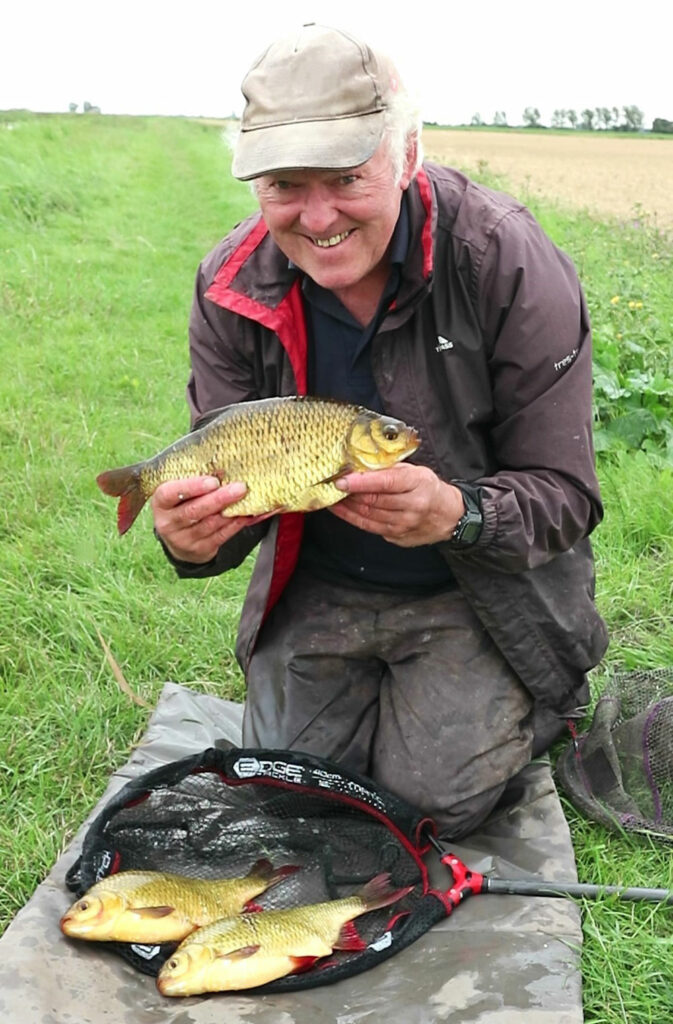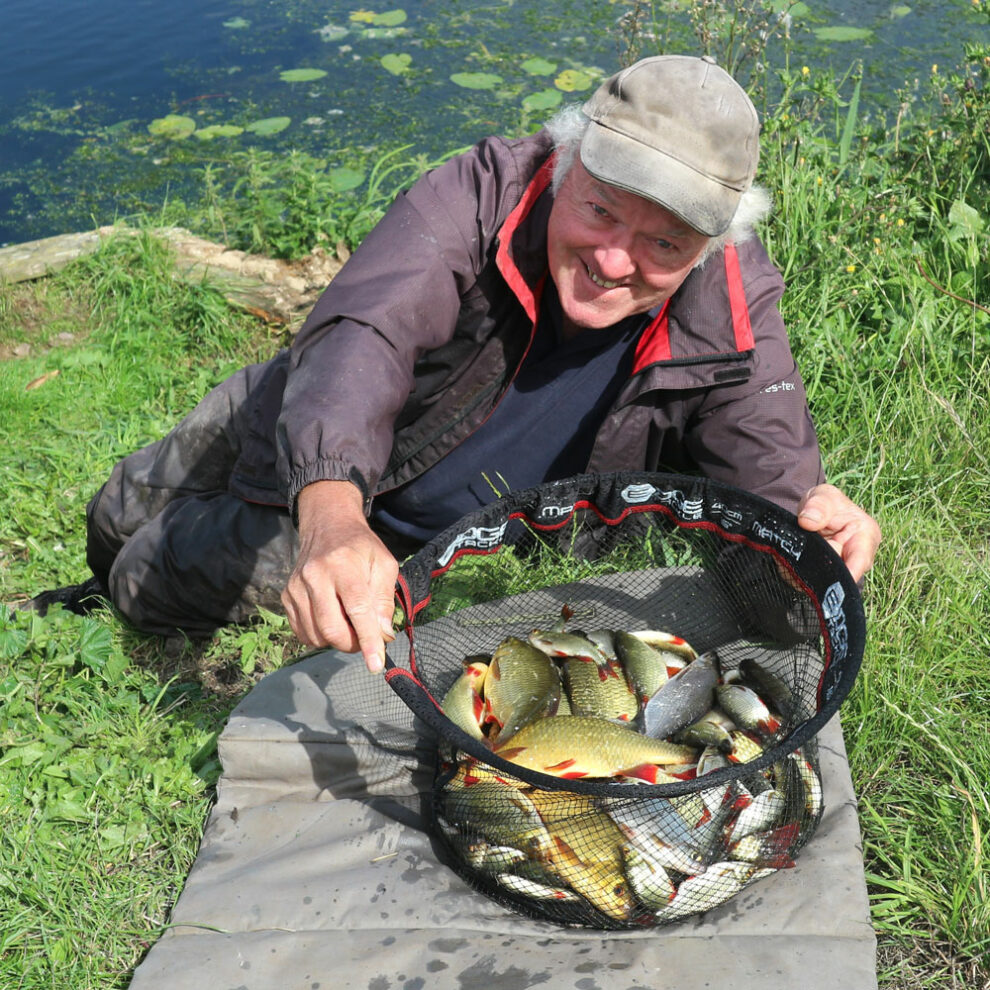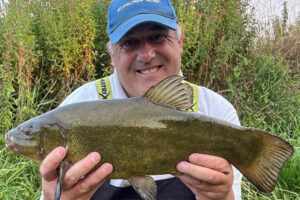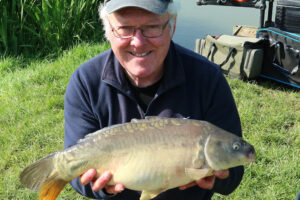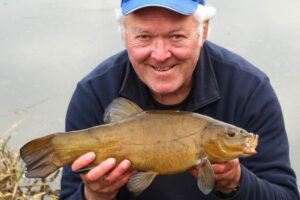Famous Peg
These are the willow shrouded moorings by the Health Centre Bridge in March, where the match record was smashed earlier this year with an amazing 87.5lbs haul of rudd. I moved to the area just a few weeks later, but it was the close season and all I could do was walk the banks of the Old River Nene, making plans for the future. A huge shoal of rudd lingered by the green footbridge until it was getting close to June 16th, but with just a few days to go, the fish suddenly disappeared. It’s normal practice for big shoals in the fens to migrate, stacking up in well sheltered and built-up areas during winter, melting away into many miles of connecting waterways for the summer months. There’s a maze of places where they can go. One possibility I discovered was just a couple of miles away, on the outskirts of town, where the Twenty Foot River cuts away from the old course of the Nene.
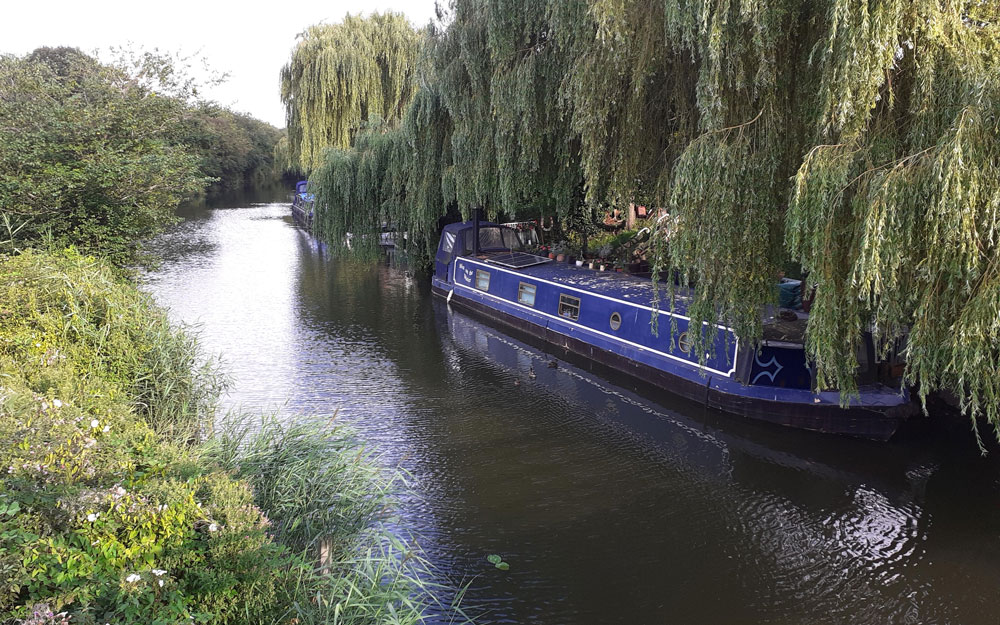
Getting Acquainted
Until recently, rudd had only featured marginally throughout my long fishing career. I can remember a couple of distant magazine photo shoots when I encountered these fish while exploring new venues. They hit the surface like a pack of piranhas when anything was fed, providing hectic sport and some great catches. It was difficult to get away from smaller rudd, which even grabbed hook baits attached to heavy feeder rigs as they hit the water. Rudd may be rampant on some venues, but on others they are a lot more localised, inhabiting quiet areas with plenty of cover. I’ve caught stray ones on occasional trips to various drains over the years, but now I’m living in the heart of fenland, rudd appear to be everywhere. As I drive along bumpy country roads next to the water, the surface is constantly dimpled with these fish. The vast shoals stretch as far as the eye can see.
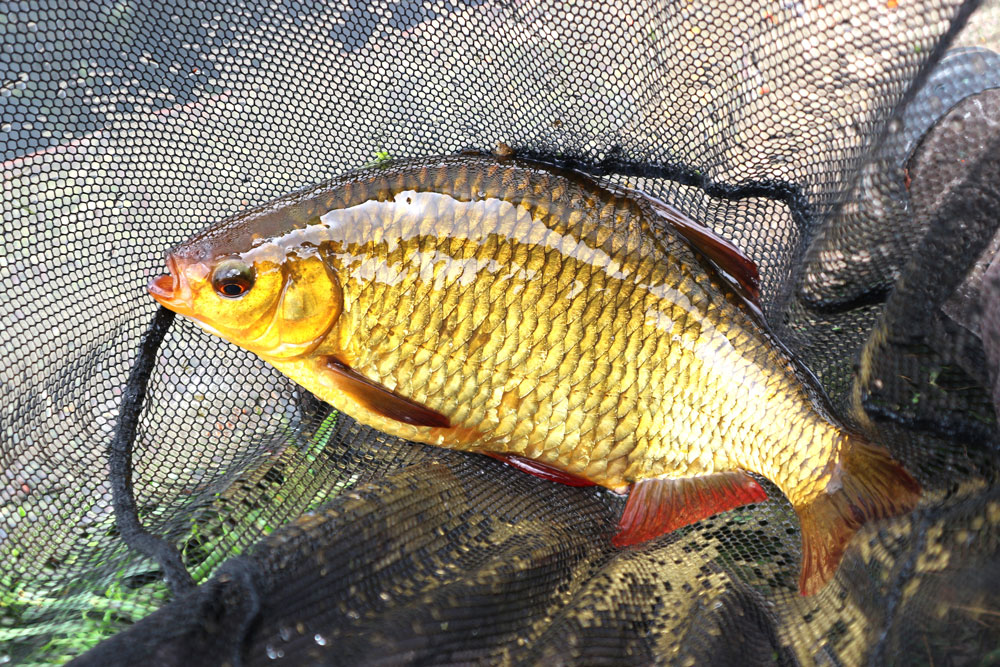
The Creek
Being new to the fens, my first challenge has been getting to know local venues. It’s very different from places I’m used to. The only features that stand out in the flat Cambridgeshire countryside are wind turbines, bridges and reed lined banks. There are countless miles of drains that all look identical. But gradually, I’m beginning to note subtle differences that make some swims better than others. It might be slightly less weed, a tad more colour in the water, a few feet of extra width, thicker bankside cover, or the simple fact that a spot is well-trodden by other anglers. Many areas are heavily overgrown and haven’t been fished for years, requiring shears to find the water’s edge. The plus factor with more accessible spots like this one at Creek Road on the outskirts of March, is the unusually comfortable swims have resident fish, due to seeing angler’s baits regularly.
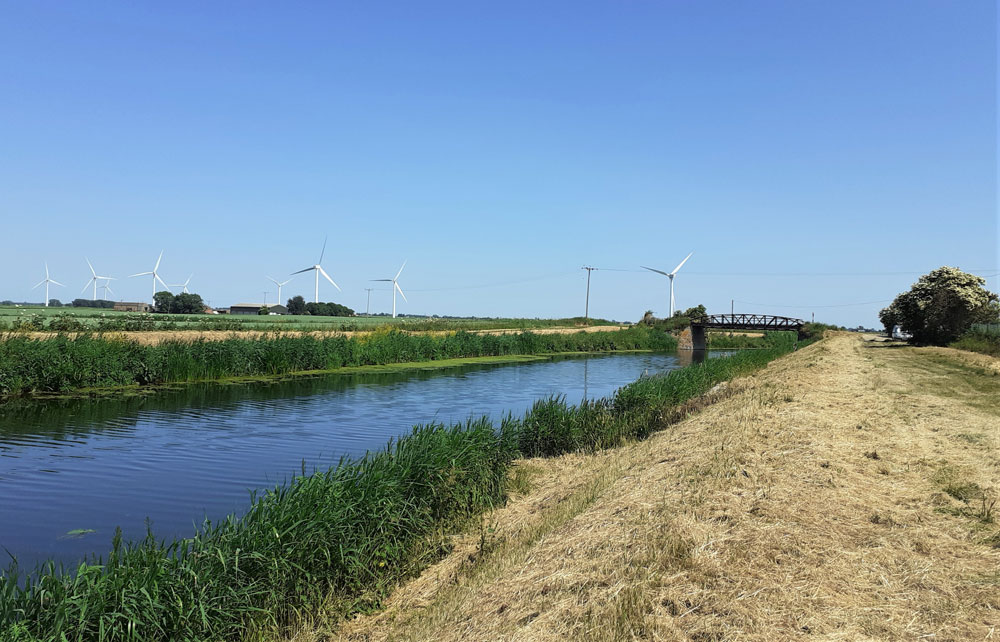
Learning Curve
Venturing out into more isolated parts of the fenland countryside presents a different sort of challenge, where an attacking approach is needed to gain a response. I doubt if many of the wild inhabitants have ever been near an angler, or experienced the type of baits we use. Positive feeding is essential to make something happen, but even then, you need to work out where the fish are most inclined to accept hook baits. During early attempts, I couldn’t buy a bite at full depth on the Twenty Foot River, which is really a drain and around 10 feet deep where I’ve been exploring. The only indications I could get were on the way down from bleak, rudd and small perch. By gradually shallowed up and feeding more, hand-sized skimmers, roach, and hybrids turned up. I began to put some decent catches together, but only made up with small fish. I knew I was missing a trick.
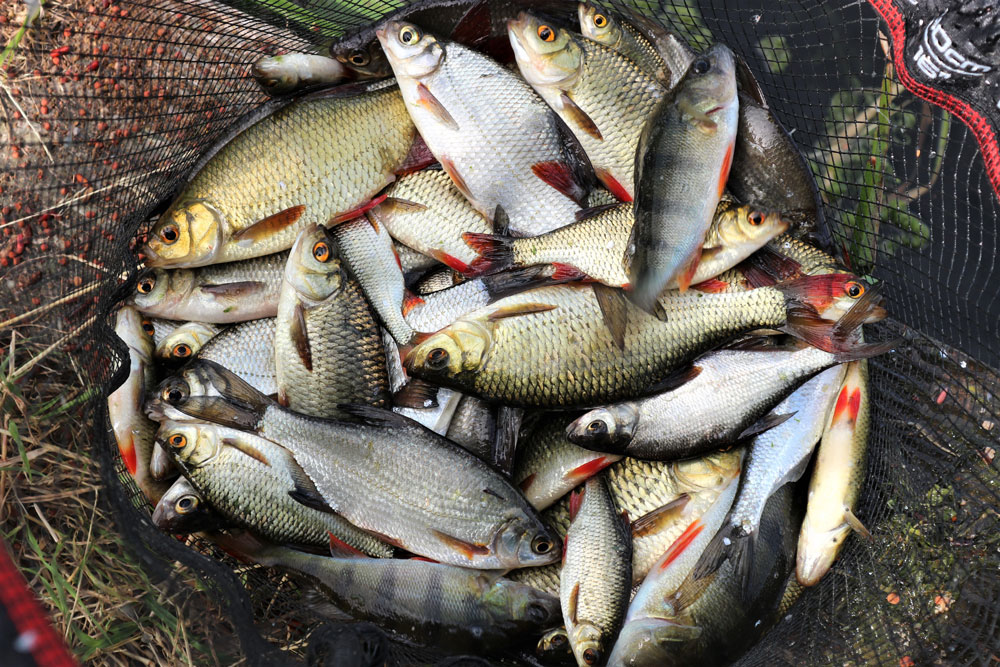
Problem Solving
After a few trips, the general pattern was most bites were occurring on the drop, or just as the hook bait settled. If nothing happened and the tackle got to the bottom, it was a waste of time leaving it there for more than a minute. This gave me the idea of using super lightweight groundbait feeders with long fluorocarbon hook lengths. Anything over 10g was too heavy and only pulled occasional interest on the way down. I quickly modified some small cage designs to take even less weight and found with regular casting it was suddenly all action. It became evident the smaller fish were on top, with bigger ones just below them and hardly anything lower down. A big problem, if hook baits got the chance to settle, was they quickly became obscured by weed. This prompted me to switch to waggler tactics and I immediately started to contact some proper rod bending rudd.
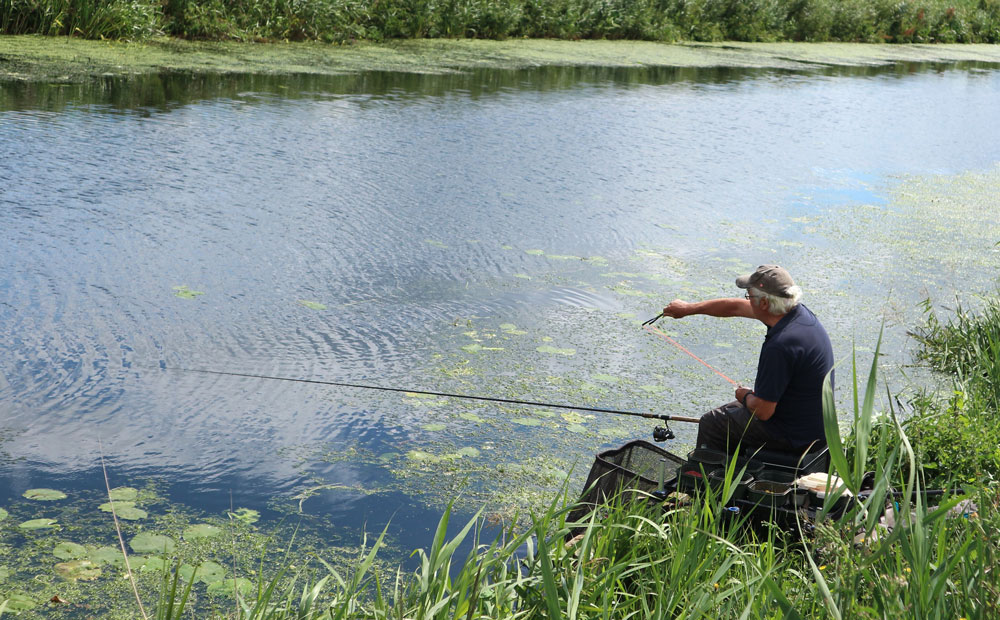
Going Shallow
I didn’t bother plumbing up during my next couple of outings. I started with a waggler set at 3ft and kept adjusting the float, exploring a bit deeper, as long as the hook bait wasn’t snagging anything. To my surprise, I often got caught up at mid-depth, in places where I knew the water was much deeper. It was mainly long lengths of pond and streamer weed. A pattern began to emerge where I could get bites straight away by loose feeding casters or maggots, but it was hard work wading through myriads of tiny rudd and bleak. I started experimenting and found pellets worked well for bigger fish, but they needed a fair while before pulling regular bites. Sweetcorn attracted quicker interest on the hook, probably because it’s so highly visible. I didn’t feed any because the size varies so much, making it catapult out everywhere. Uniform pellets were easier to group and loose feed tightly.
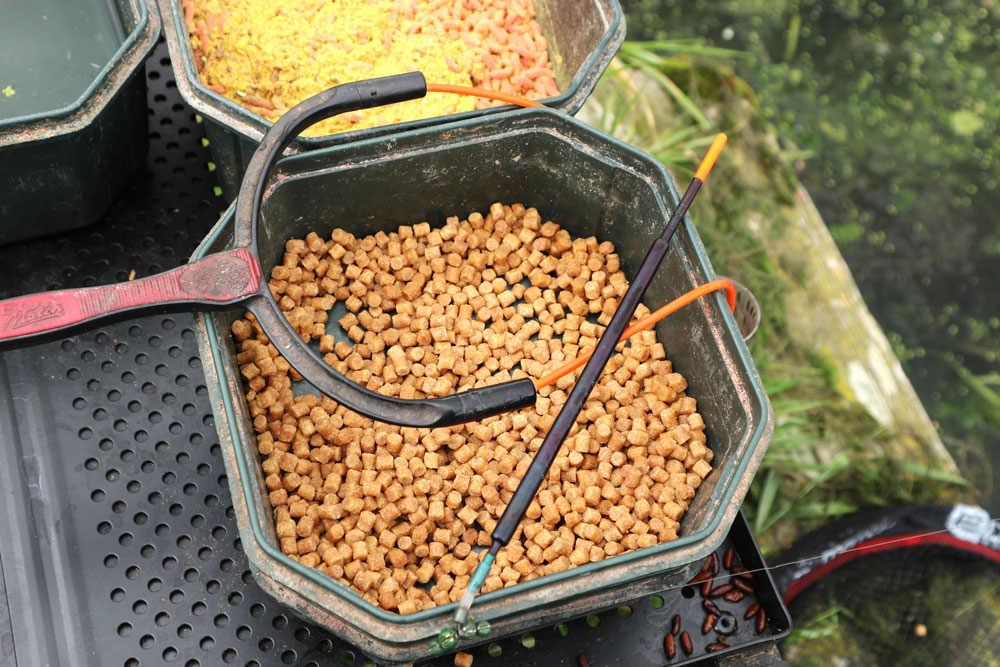
Banding Up
It seemed strange using commercial fishery tactics out in the wilds of Cambridgeshire, but with so many fish about, banded pellets became the way to go. Soft hookers got knocked off almost instantly, while harder baits anchored in medium latex bands proved the perfect answer. No fancy hairs, or anything like that, simply threading the hook point under the band, so it ended up on the bend. It needed to be lightly attached. Nicking the band with the hook resulted in too many bumped fish. Decent rudd thump hard against the rod tip and kite off right or left, trying to dive into nearside weed and reed beds as they are being played in. Directly hooked bands don’t give way easily and can create a buffer, helping lively fish to wriggle free. By loosely attaching pellets, you risk losing quite a few bands, but it’s a small price to pay when catching plenty of quality fish like this one.
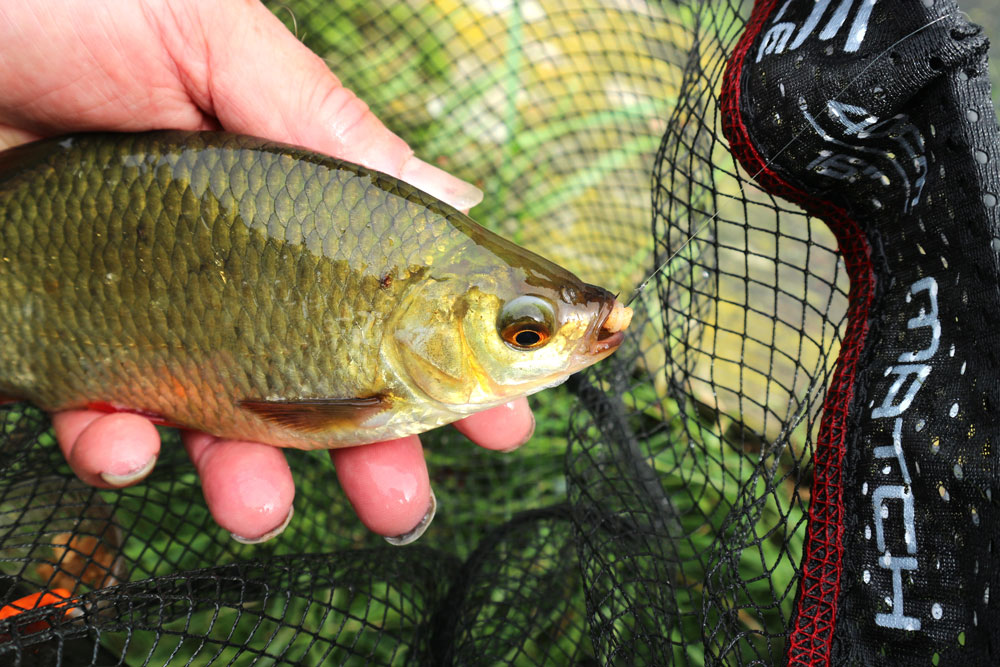
Pellet Basics
I played around with different types of flavoured and coloured pellets, but being used in combination with a shallow set waggler, plain ones with low oil content worked best. It’s a visual method, regularly loose feeding, looking for bites on-the-drop or with baits suspended up in the water. Catapulting slightly wetted pellets gains better distance, plus fish in wild venues seem to find their softer skins more attractive. This can apply to what you use on the hook as well, so a trick I use is to pre-band a few pellets and gently sprinkle some water over them. This makes them swell up a bit, while remaining hard centred, still anchoring okay in their bands. This gains a big edge with fish like rudd and skimmers, making pellets appear almost like punched bread. A banding tool – the spring-loaded type with fine metal prongs – is essential kit, as are plenty of medium latex bait bands.
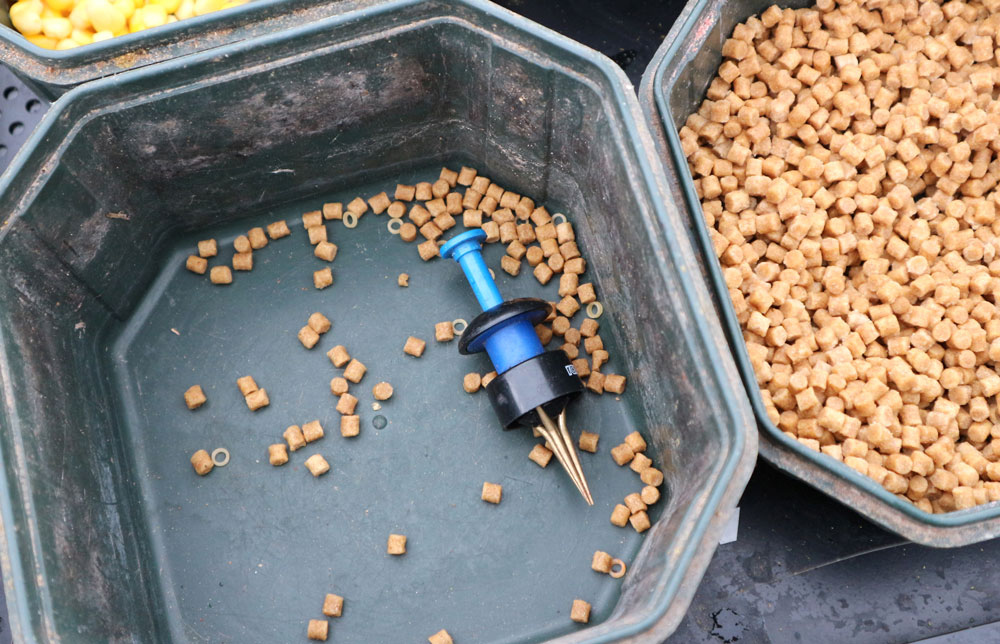
Perfect Fish
Stunning rudd like this made all my efforts worthwhile. I caught plenty using long hook lengths and light cage feeders, but even more with shallow set wagglers. I’ve watched videos where anglers take the mobile approach for fish like this, feeding floating baits and following them with the wind, to find where the shoals are. But sitting in one spot and feeding regularly has been successful enough for me. Fen rudd are widely spread, which means they are never far away. They arrive in numbers, on the hunt for food, and are often chased around by predators. You get mixed sizes in shoals, and those with lots of small fish tend to linger around the longest. Better quality rudd typically push small fish out eventually, but are harder to keep in your swim, coming in waves. Really big ones often turn up alone, or in small nomadic groups, tending to hang back on the edges of busy catching areas.
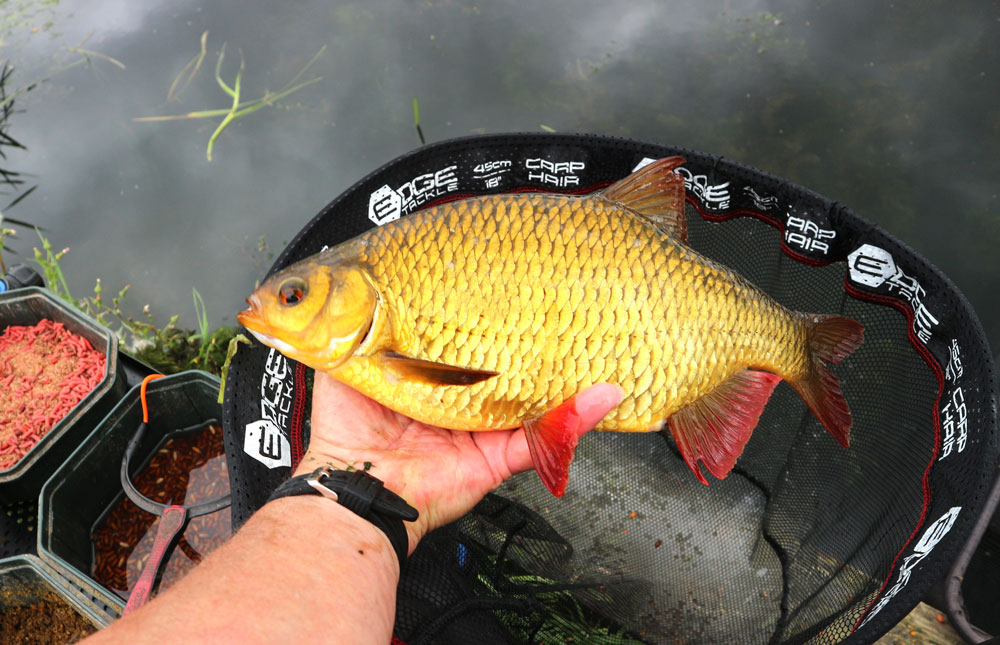
Getting Bigger
Larger rudd like these beauties were caught on pellets and sweetcorn, but to keep bites coming, casters or maggots have proved essential. That means having to put up with small stuff because without any activity in a swim, big rudd stay away. They are attracted by feeding small fish, patrolling close by, constantly looking for some free food. It becomes a game of switching baits to try to be more selective and get through to fish like these, at times persevering with smaller offerings to keep swims alive. The trick is to guess the right moment for a banded pellet or grain of sweetcorn to go on the hook. I’ve tried switching completely to pellets, but that tends to kill things off. It has been far more effective feeding other baits regularly, mixing in a few occasional pellets. Once better sized rudd turn up on maggot or caster, a quick switch to something more substantial often results in a corker.
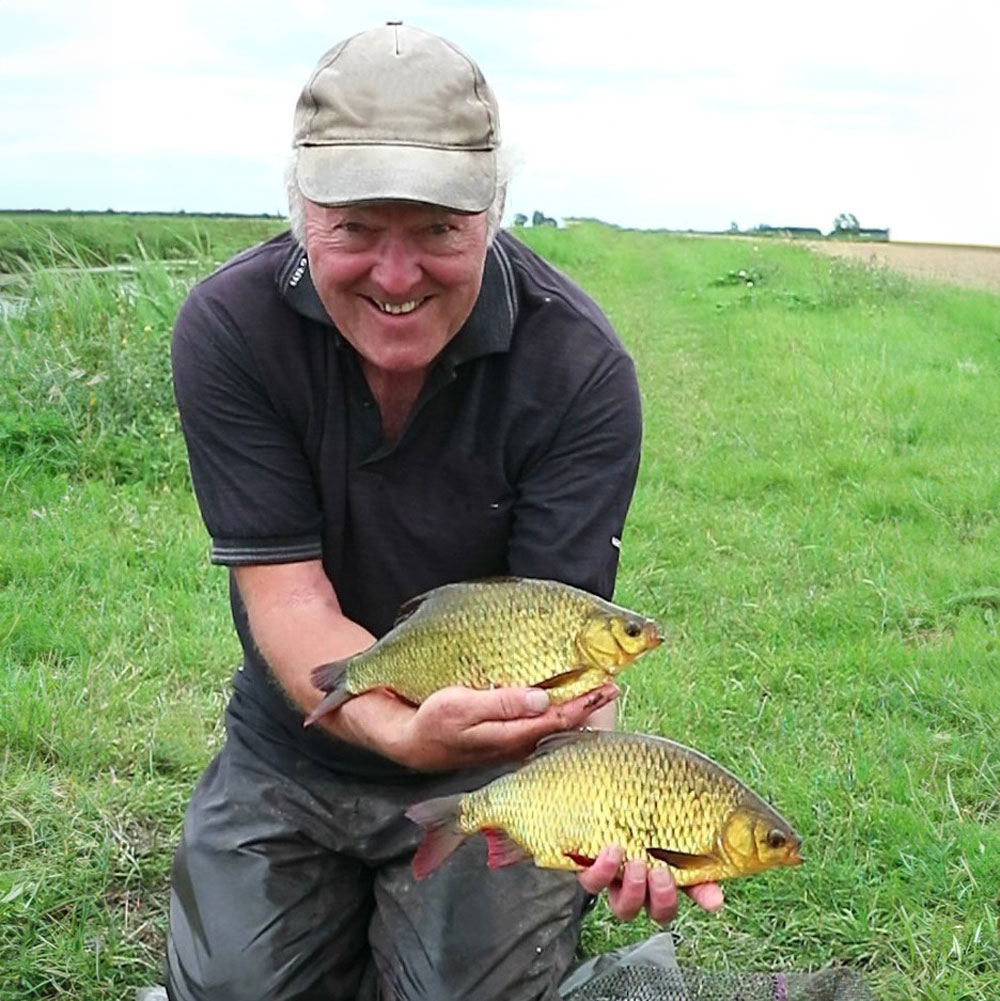
Mixing It
This is a typical bag of chunky rudd, featuring the odd bigger fish and a smattering of skimmers, which often mix in with shallow feeding shoals. It’s busy fishing and great fun, but also tiring at times when smaller rudd blitz everything. Trying to be clever and feeding closer, within bagging range of short pole or whip rigs, hasn’t worked in the clear water and often bright conditions. Those tactics also attract jack pike that like lurking in the weedy nearside margins. Big rudd in the drains prefer the far bank, probably because it’s less disturbed. I’ve watched these fish from bridges in the parkland that runs through March. You see odd better ones lazily drifting out as far as the middle, but when your eyes become more accustomed, many more bigger shapes can be seen over the far side. They like moored boats and overhanging cover, which you don’t get much of in the surrounding flatlands.
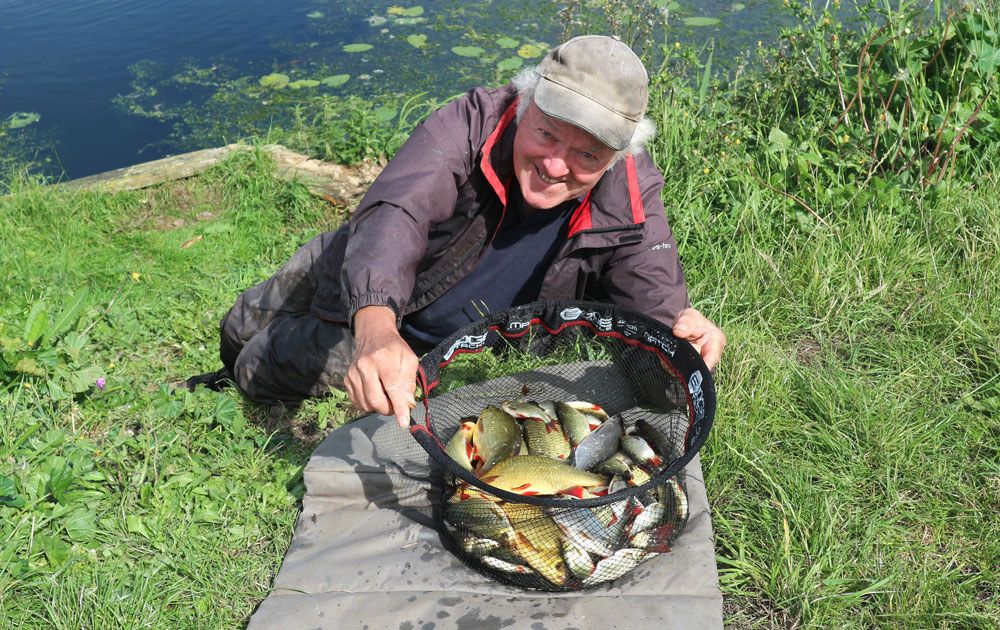
New Addiction
The first time I experienced a proper rod bender was as a youngster on a park lake, where a big perch interrupted the small roach and gudgeon I normally encountered, playing my usual numbers game. That fish must have been well over two pounds and looked a monster. It gave me mixed feelings of awe and achievement, emotions that still grip me to this day, especially with fabulous rudd like these. This trio turned up late in a session, after wading through a countless stream of smaller ones. Suddenly, a busy bagging session turned into something entirely different. A discernible change occurred when the smaller stuff eventually scarpered. The atmosphere was electric as my light float rod hit into what felt like a brick wall. Thereafter, it was manic as these wild creatures tried every trick in the book to shed my small hook or to weed up my waggler tackle. I’m delighted they failed!
